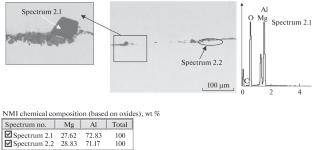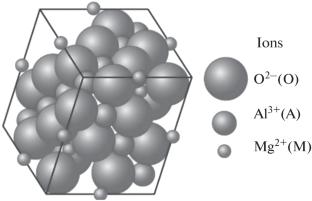高碳优质钢二次冶金过程中非金属夹杂物的形态演变第一部分:铝镁尖晶石基夹杂物形成条件及其对生产效率和产品质量的影响
IF 0.3
Q4 METALLURGY & METALLURGICAL ENGINEERING
引用次数: 0
摘要
摘要:企业专家的生产经验与材料科学和应用冶金领域获得的理论和实验数据相结合。提出了基于MgO-Al2O3体系控制含非金属夹杂物的高碳优质钢污染程度的规律。本文章由计算机程序翻译,如有差异,请以英文原文为准。


Morphological Evolution of Nonmetallic Inclusions during Secondary Metallurgy of High-Carbon Quality Steel. Part I: Alumina–Magnesia Spinel-Based Inclusion Formation Conditions and Their Influence on the Production Efficiency and the Product Quality
Abstract—The production experience of enterprise specialists is combined with theoretical and experimental data obtained in the fields of materials science and applied metallurgy. The laws used to control the contamination level of high-carbon quality steels with nonmetallic inclusions based on the MgO–Al2O3 system are formulated.
求助全文
通过发布文献求助,成功后即可免费获取论文全文。
去求助
来源期刊

Russian Metallurgy (Metally)
METALLURGY & METALLURGICAL ENGINEERING-
CiteScore
0.70
自引率
25.00%
发文量
140
期刊介绍:
Russian Metallurgy (Metally) publishes results of original experimental and theoretical research in the form of reviews and regular articles devoted to topical problems of metallurgy, physical metallurgy, and treatment of ferrous, nonferrous, rare, and other metals and alloys, intermetallic compounds, and metallic composite materials. The journal focuses on physicochemical properties of metallurgical materials (ores, slags, matters, and melts of metals and alloys); physicochemical processes (thermodynamics and kinetics of pyrometallurgical, hydrometallurgical, electrochemical, and other processes); theoretical metallurgy; metal forming; thermoplastic and thermochemical treatment; computation and experimental determination of phase diagrams and thermokinetic diagrams; mechanisms and kinetics of phase transitions in metallic materials; relations between the chemical composition, phase and structural states of materials and their physicochemical and service properties; interaction between metallic materials and external media; and effects of radiation on these materials.
 求助内容:
求助内容: 应助结果提醒方式:
应助结果提醒方式:


